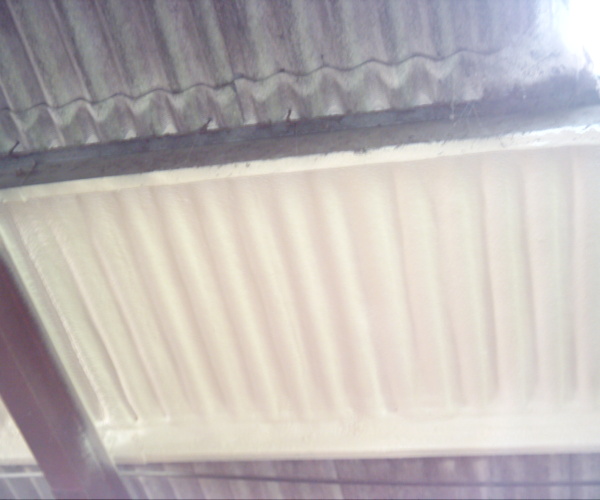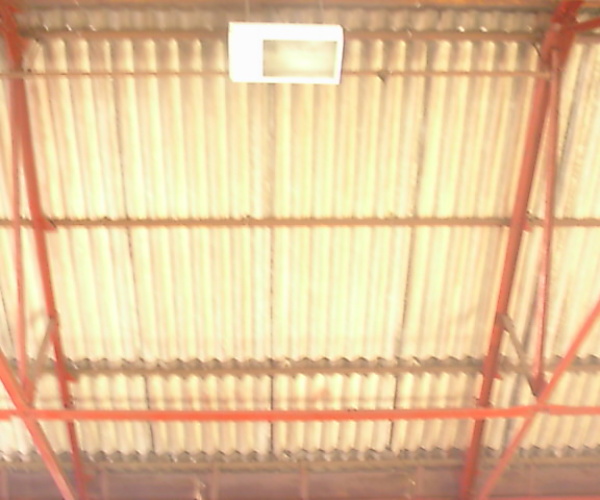Asbestos Cement is primarily a cement-based product where about 10% to 15% w/w asbestos fibres are added to reinforce the cement. Asbestos cement is weatherproof in that although it will absorb moisture, the water does not pass through the product. It was used for corrugated sheets, slates, moulded fittings, soffits and undercloak, water cisterns, rainwater gutters, down pipes, pressure pipes, underground drainage and sewer pipes, sills, copings, chalkboards, fascias, infill panels, etc. It is sometimes difficult to tell the difference between an asbestos cement product and a low-density insulation board. Where the product has been used as a roofing or cladding product, open to the weather, you can be confident that the product is asbestos cement. Manufacture of all low density products was stopped in the late 70’s and since they were not weather resistant, if they had been fixed outside they would have broken down long before now. If the product is moulded it will be asbestos cement as low-density products were not moulded, except as half rounds for pipe lagging.
As the asbestos content within any asbestos cement product is relatively low, the dangers to occupants of buildings which contain asbestos cement is minimal. However, if any work is carried out on the asbestos cement sheets, especially where the use of power tools is involved, this can release asbestos fibres into the air.
Asbestos Encapsulation using EduFoam sprayed insulation
Where buildings contain asbestos cement products, such as roofing sheets, which are in good condition, the risk to employees should be relatively low. However, over time and where the asbestos sheets are disturbed, the risk of fibre release becomes greater. In situations where larger buildings contain asbestos containing materials, complete removal of these products can be extremely costly and disruptive. An easier solution to this problem is to encapsulate the surface of the asbestos containing material, meaning that fibres cannot be released into the air. Spray foam insulation is applied directly to the internal surface of the asbestos cement sheets, where it cures to form a rigid insulation barrier which will also encapsulate and seal the asbestos cement sheets preventing any unwanted fibre release.
By encapsulating any asbestos-containing material, the risk of any exposure dangers to employees present within the building should be kept to a minimum. By reducing any risks in this way, rather than a full removal and replacement of the material, the costs and disruption to the business should be kept to a minimum as well. If you are considering any work on asbestos-containing materials, or are unsure on the risks to your workplace, it is always advisable to contact asbestos specialists. Should you wish to explore the option of encapsulation with EduFoam, we will be happy to discuss this with you or any contractors you employ.
For more information on EduFoam for encapsulation, please feel free to call us on 0161 876 8040 or click here to contact us directly.



